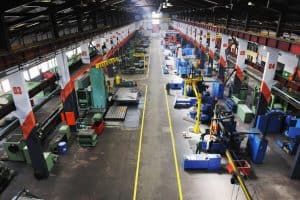
5G connectivity in tests on factory floors brings a 30% decrease in maintenance costs and a 7% improvement in equipment efficiency.
Unlike the generations before it, 5G is expected to revolutionize a lot of industries by bringing them online. However, ABI Research believes without enterprise business models, it may take over a decade for businesses to see a return on investment.
In a new analysis report, ABI Research previews the improvements 5G connectivity is already bringing to test floors at Schneider Electric in France and Osram in Germany. These include a 30 percent decrease in maintenance costs and a seven percent improvement in equipment efficiency.
SEE ALSO: 5G Networks Rated Top Of Lux Research 20 for 20 List
“As a technology, 5G will be a perfect fit to provide wireless connectivity on the factory floor, since it enables, for example, establishing a massive wireless sensor network or VR and AR applications for predictive maintenance and product monitoring,” said Leo Gergs, Research Analyst at ABI Research. “Furthermore, the technology opens up new production opportunities by enabling artificial intelligence applications to be integrated into manufacturing processes.”
5G in consumer form may be suitable for a few industry players, but to achieve value across the entire industry, the report says: “A much closer collaboration between network operators, infrastructure vendors, and manufacturers will be required.”
Without that collaboration, ABI Research predicts it will take 14 to 15 years to break even from the 5G investment, compared to 10 years if the enterprise models were in place.
“It is, therefore, highly important for network operators and infrastructure vendors to develop new business strategies taking into manufacturers’ requirements. Centrally, this should include moving away from selling connectivity as such and develop attractive pricing models for additional network capabilities,” said Gergs.
5G has been pegged as essential for a lot of industries, including autonomous vehicles, agriculture, and education. We’ll see how essential it is, for those and other industries, in the next few years as it starts to be introduced to mobiles.



























